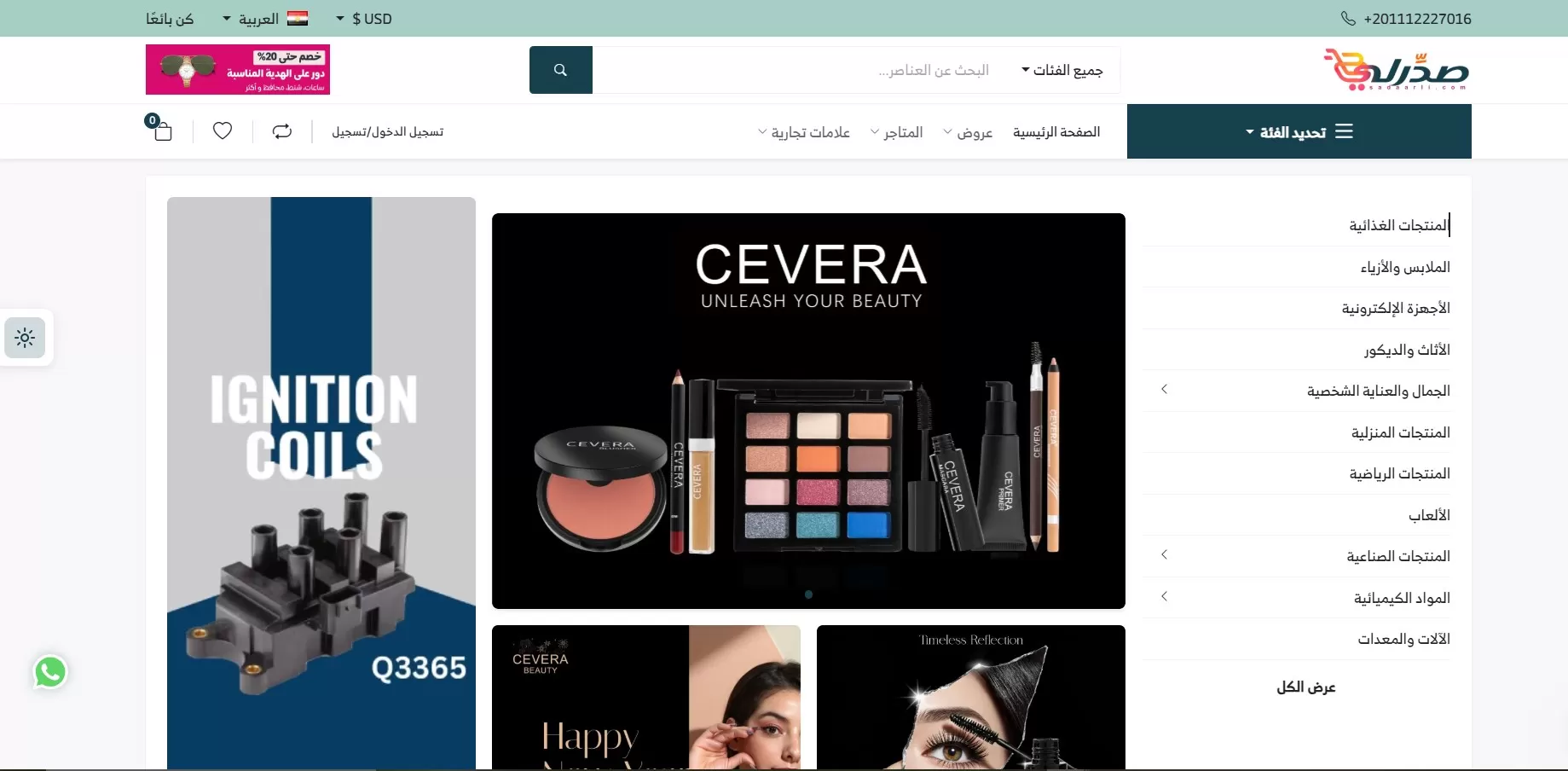- Phone: +201112227016
- Email: info@weiihou.com
11:00 AM - 11:00 PM

Sadaarli E-commerce Platform (B2B)
The "Sadaarli" E-commerce Platform (sadaarli.com) was programmed and designed using modern technologies commonly employed in the development of (B2B):
1. Requirements Analysis and Planning:
- Understanding the Target Audience: Identifying the needs and expectations of users (vendors and buyers).
- Defining Core Features: Specifying the functionalities the platform should provide, such as vendor registration, product management, payment processing, and shipping management.
- Selecting Appropriate Technologies: Choosing suitable programming languages, databases, frameworks, and hosting platforms.
- User Experience (UX) and User Interface (UI) Design: Creating attractive and user-friendly designs for the platform.
2. Frontend Development:
- Using Programming Languages: Employing HTML, CSS, and JavaScript to build the user interface.
- Utilizing JavaScript Frameworks: Leveraging frameworks like React, Angular, or Vue.js to develop interactive and dynamic interfaces.
- Responsive Design: Designing interfaces that adapt to various devices and screen sizes.
3. Backend Development:
- Using Programming Languages: Utilizing languages such as Python, PHP, Node.js, or Ruby to develop the platform's business logic.
- Database Management: Employing databases like MySQL, PostgreSQL, or MongoDB for data storage and management.
- API Development: Developing Application Programming Interfaces (APIs) to connect the frontend to the backend.
- Framework Utilization: Using frameworks like Laravel, Django, Express.js to streamline the development process.
4. Content Management System (CMS) Development Based on Laravel Framework:
- Custom CMS Development: Developing a custom Content Management System (CMS) using Laravel 12 to facilitate product, order, and vendor management.
- Vendor Relationship Management (VRM) System: Programming a system for managing vendor relationships.
- Customer Relationship Management (CRM) System: Programming a system for managing customer relationships.
5. Payment Gateway and Shipping Company Integration:
- Electronic Payment Gateway Integration: Integrating electronic payment gateways such as PayPal, Stripe, or others to facilitate secure payment transactions.
- Shipping Company Integration: Integrating shipping companies such as DHL, FedEx, or others to provide diverse shipping options.
6. Testing and Quality Assurance:
- Comprehensive Platform Testing: Conducting thorough platform testing to ensure correct performance and bug-free operation.
- Security Testing: Performing security tests to ensure user data protection.
- Load Testing: Conducting load tests to ensure the platform's ability to handle a large number of users.
7. Deployment and Maintenance:
- Platform Deployment: Deploying the platform on hosting servers.
- Technical Support and Maintenance: Providing ongoing technical support and maintenance for the platform.
- Periodic Updates: Regularly updating the platform to add new features and improve performance.
8. Search Engine Optimization (SEO):
- Website Structure and Content Optimization: Optimizing the website's structure and content to increase its visibility in search results.
- High-Quality Backlink Building: Building high-quality backlinks to the website.
9. Digital Marketing:
- Digital Marketing Strategies: Utilizing digital marketing strategies to promote the platform and attract users.
- Data Analysis and Performance Measurement: Analyzing data and measuring performance to improve marketing campaigns.
